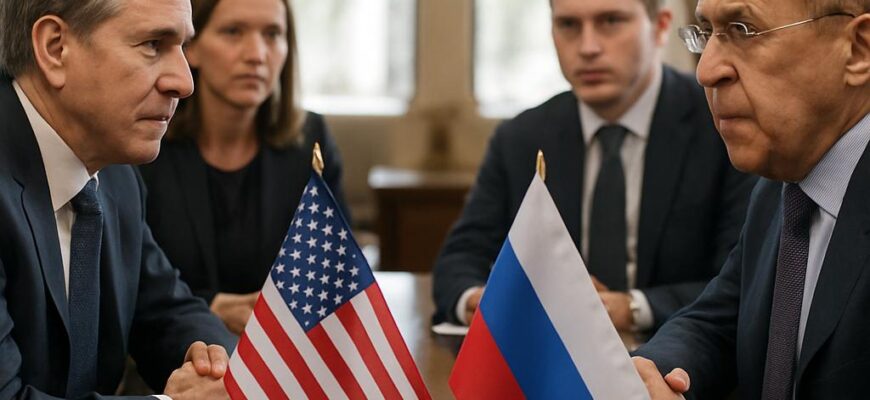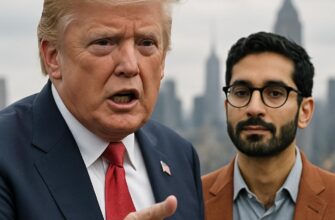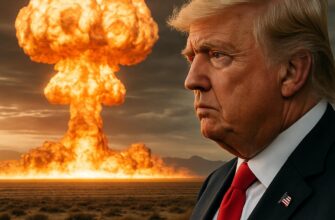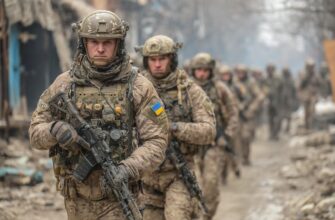When envoys from two global powers meet on neutral ground, the conversation rarely stays simple. In a brief summit in Abu Dhabi this week, diplomats exchanged views on a series of tense, interconnected issues that have implications from Eastern Europe to the Middle East. The setting, tone, and follow-up will matter at least as much as any public readout.
- Why a neutral venue matters
- Who was in the room and the format of the talks
- What was on the agenda
- Security issues: where risk concentrates
- Regional overlap in the Middle East
- Signals, public messaging, and what success looks like
- Historical patterns and precedents
- Practical constraints that shape outcomes
- What to watch in the weeks ahead
- On-the-ground impressions from diplomatic settings
- Why the world should pay attention
Why a neutral venue matters
Diplomatic exchanges away from capitals allow negotiators to recalibrate without the pressure of immediate domestic audiences. Abu Dhabi has become a favored backchannel hub because it combines logistical capacity, a low profile for sensitive discussions, and relationships with both sides.
Neutral venues also send a visual message: parties can de-escalate ritual hostility simply by meeting. That symbolic step is often necessary before technical progress can be made, whether on prisoner exchanges, deconfliction lines, or reciprocal diplomatic gestures.
Who was in the room and the format of the talks
Representatives from the US and Russia held talks in Abu Dhabi. The discussions reportedly involved senior diplomats and policy officials rather than heads of state, a format that typically aims to flesh out positions and test proposals without committing leaders to headlines.
Such meetings usually mix scheduled bilateral sessions with smaller working groups, allowing teams to drill into technical issues like arms-control verification, airspace deconfliction, and humanitarian coordination. Public statements after these meetings are often deliberately sparse.
What was on the agenda
Participants are known to prioritize a handful of recurring, high-stakes topics. These include conventional and nuclear arms control, crisis communication mechanisms, regional conflicts where their interests intersect, and sanctions or countermeasures that create mutual friction.
Below is a concise list of common agenda items that typically surface in U.S.-Russia diplomatic contacts. The exact mix varies by meeting, but these themes recur because they are where risk and opportunity overlap.
- Arms control and military transparency
- Conflict hotspots (e.g., Ukraine, Syria, Nagorno-Karabakh)
- Cybersecurity and norms for state behavior in cyberspace
- Humanitarian issues and prisoner exchanges
- Sanctions, economic measures, and possible relief mechanisms
Security issues: where risk concentrates
Arms control remains a core concern because it directly reduces the chance of miscalculation. Negotiators often trade conceptual frameworks: verification steps one side can accept in exchange for reciprocal restraints that the other finds credible.
Similarly, crisis management protocols—hotlines, notification mechanisms, rules for air and sea encounters—are practical tools that can prevent accidents from igniting broader confrontation. These are the kinds of outcomes that rarely make headlines but can have outsized value.
Regional overlap in the Middle East
Any meeting in the Gulf invites discussion of nearby theaters where both countries have influence. Syria, for example, remains a place where Moscow and Washington have both cooperated and clashed; deconfliction in the skies and coordination on humanitarian corridors are pragmatic priorities.
Iran is another point of contention. While the United States and Russia do not share the same policy goals regarding Tehran, they both have an interest in preventing direct conflict that could destabilize trade routes and energy markets—issues that resonate in Abu Dhabi.
Signals, public messaging, and what success looks like
Public statements after such talks are often cautious: they underscore commitment to diplomacy while avoiding promises that might box negotiators in. Observers therefore judge success by subtler signals—whether contacts continue, whether working groups are established, and whether participants revisit sensitive topics with more specificity.
Below is a simple table of practical indicators diplomats and analysts use to assess progress after meetings like the one in Abu Dhabi.
| Indicator | What it would mean |
|---|---|
| Follow-up working groups | Commitment to technical work beyond rhetoric |
| Joint readout or agreed language | Mutual willingness to record at least limited consensus |
| Practical measures (e.g., prisoner releases) | Concrete reciprocity that builds trust |
| Silence or oblique messaging | Signals continued disagreement or domestic constraints |
Historical patterns and precedents
History shows that small, low-profile meetings can either thaw relations or serve as holding patterns while tensions simmer. Past encounters—whether in Geneva, Helsinki, or other capitals—have sometimes led to identifiable steps like renewed arms-control talks, and other times produced only modest confidence-building measures.
Analysts often point to the rhythm of diplomacy rather than a single meeting as decisive: a sequence of consistent, low-drama contacts tends to yield more durable results than one high-profile summit followed by silence.
Practical constraints that shape outcomes
Domestic politics, allied concerns, and between-the-lines bargaining frequently limit what negotiators can deliver. Officials may lobby for flexibility but publicly face domestic audiences reluctant to reward the other side. That dynamic pushes negotiators toward narrowly scoped, technically focused agreements.
Another constraint is verification. Any confidence-building measure that cannot be credibly verified tends to be short-lived. As a result, talks often produce frameworks for verification rather than immediate rollbacks or sanctions relief.
What to watch in the weeks ahead

The true test of the Abu Dhabi meeting will come in follow-through. Watch for announcements of working groups, planned technical exchanges, or the appearance of diplomats in Geneva, Vienna, or other hubs where verification and legal work can proceed.
Media coverage will highlight public statements, but seasoned observers will be scanning quieter signs: sudden scheduling of military-to-military hotlines, the names of experts attached to follow-up teams, and discreet bilateral engagements with third-party hosts.
On-the-ground impressions from diplomatic settings
Speaking as a writer who has spent long hours in press rooms and sidelines of international meetings, I can say the texture of diplomacy is often found in small rituals. A shared meal, a private corridor conversation, or the decision to allow a specialist to attend a technical session can carry more weight than a televised handshake.
Those moments create the human connections that make negotiation possible. In environments where mistrust runs deep, building a reliable rhythm of contact—predictable, unglamorous, and sustained—can be the most consequential achievement.
Why the world should pay attention

When influential states maintain channels of communication, global crises are less likely to spiral. Even if progress is incremental, reducing the likelihood of miscalculation has value for allied policymakers, businesses, and civilians in conflict zones.
Abu Dhabi’s role as host underscores how regional actors can facilitate dialogue between distant powers. That intermediary function matters because it broadens the tools available to manage shared risks, from maritime incidents to cyber intrusions.
If you want to follow developments and read more in-depth analysis, visit our site and explore other materials that unpack these diplomatic dynamics. For continued coverage and perspective, please visit https://themors.com/ and read other materials from our website.









